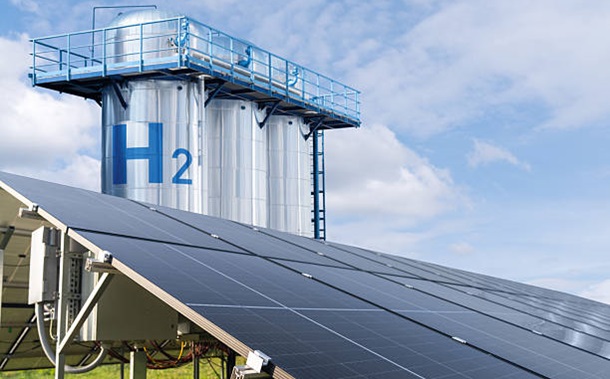Leveraging Feature Sets and Machine Learning for Enhanced Energy Load Prediction: A Comparative Analysis
Downloads
Doi:10.28991/ESJ-2024-08-06-01
Full Text:PDF
Downloads
Almuhaini, S. H., & Sultana, N. (2023). Forecasting Long-Term Electricity Consumption in Saudi Arabia Based on Statistical and Machine Learning Algorithms to Enhance Electric Power Supply Management. Energies, 16(4), 2035. doi:10.3390/en16042035.
Zou, X., Wang, R., Hu, G., Rong, Z., & Li, J. (2022). CO2 Emissions Forecast and Emissions Peak Analysis in Shanxi Province, China: An Application of the LEAP Model. Sustainability (Switzerland), 14(2), 637. doi:10.3390/su14020637.
Jena, P. R., Managi, S., & Majhi, B. (2021). Forecasting the CO2 emissions at the global level: A multilayer artificial neural network modelling. Energies, 14(19), 1–23. doi:10.3390/en14196336.
IEA. (2024). Energy system Buildings: IEA 50. International Energy Agency (IEA), Paris, France. Available online: https://www.iea.org/energy-system/buildings (accessed on November 2024).
European Parliament. (2023). P9_TA(2023)0068 Energy performance of buildings (recast). European Parliament, Strasbourg, France, Vol. 0426, No. March 2023.
Piazolo, D. (2022). The Paris Climate Agreement as Benchmark for Buildings and Companies. IOP Conference Series: Earth and Environmental Science, 1078(1), 012115. doi:10.1088/1755-1315/1078/1/012115.
Muhamad, W. N. W., Zain, M. Y. M., Wahab, N., Aziz, N. H. A., & Kadir, R. A. (2010). Energy efficient lighting system design for building. ISMS 2010 - UKSim/AMSS 1st International Conference on Intelligent Systems, Modelling and Simulation, 282–286. doi:10.1109/ISMS.2010.59.
Yang, Y., Hu, G., & Spanos, C. J. (2022). Stochastic Optimal Control of HVAC System for Energy-Efficient Buildings. IEEE Transactions on Control Systems Technology, 30(1), 376–383. doi:10.1109/TCST.2021.3057630.
Rocha, P., Siddiqui, A., & Stadler, M. (2015). Improving energy efficiency via smart building energy management systems: A comparison with policy measures. Energy and Buildings, 88, 203–213. doi:10.1016/j.enbuild.2014.11.077.
Sekaranom, A. B., Nurjani, E., Harini, R., & Muttaqin, A. S. (2020). Simulation of daily rainfall data using articulated weather generator model for seasonal prediction of ENSO-affected zones in Indonesia. Indonesian Journal of Geography, 35(2), 143–153. doi:10.22146/ijg.50862.
Moradzadeh, A., Mansour-Saatloo, A., Mohammadi-Ivatloo, B., & Anvari-Moghaddam, A. (2020). Performance evaluation of two machine learning techniques in heating and cooling loads forecasting of residential buildings. Applied Sciences (Switzerland), 10(11), 3829. doi:10.3390/app10113829.
Kathiriya Siddhartha Nuthakki, S. (2023). AI and the Future of Medicine: Pioneering Drug Discovery with Language Models. International Journal of Science and Research (IJSR), 12(3), 1824-1829. doi:10.21275/sr24304173757.
Kim, D., Lee, Y., Chin, K., Mago, P. J., Cho, H., & Zhang, J. (2023). Implementation of a Long Short-Term Memory Transfer Learning (LSTM-TL)-Based Data-Driven Model for Building Energy Demand Forecasting. Sustainability (Switzerland), 15(3), 2340. doi:10.3390/su15032340.
Zeferina, V., Birch, C., Edwards, R., & Wood, R. (2019). Sensitivity analysis of peak and annual space cooling load at simplified office dynamic building model. E3S Web of Conferences, 111(201 9), 4–11. doi:10.1051/e3sconf/201911104038.
Shin, M., & Do, S. L. (2016). Prediction of cooling energy use in buildings using an enthalpy-based cooling degree days method in a hot and humid climate. Energy and Buildings, 110, 57–70. doi:10.1016/j.enbuild.2015.10.035.
Zhao, X., Yin, Y., Zhang, S., & Xu, G. (2023). Data-driven prediction of energy consumption of district cooling systems (DCS) based on the weather forecast data. Sustainable Cities and Society, 90, 104382. doi:10.1016/j.scs.2022.104382.
Dong, F., Yu, J., Quan, W., Xiang, Y., Li, X., & Sun, F. (2022). Short-term building cooling load prediction model based on DwdAdam-ILSTM algorithm: A case study of a commercial building. Energy and Buildings, 272, 112337. doi:10.1016/j.enbuild.2022.112337.
Nuthakki, S., Kumar, S., Kulkarni, C. S., & Nuthakki, Y. (2022). Role of AI Enabled Smart Meters to Enhance Customer Satisfaction. International Journal of Computer Science and Mobile Computing, 11(12), 99–107. doi:10.47760/ijcsmc.2022.v11i12.010.
Nuthakki, S., Kulkarni, C. S., Kathiriya, S., & Nuthakki, Y. (2024). Artificial Intelligence Applications in Natural Gas Industry: A Literature Review. International Journal of Engineering and Advanced Technology, 13(3), 64–70. doi:10.35940/ijeat.c4383.13030224.
Sadeghian Broujeny, R., Ben Ayed, S., & Matalah, M. (2023). Energy Consumption Forecasting in a University Office by Artificial Intelligence Techniques: An Analysis of the Exogenous Data Effect on the Modeling. Energies, 16(10), 4065. doi:10.3390/en16104065.
Lu, S., Cui, M., Gao, B., Liu, J., Ni, J., Liu, J., & Zhou, S. (2024). A Comparative Analysis of Machine Learning Algorithms in Predicting the Performance of a Combined Radiant Floor and Fan Coil Cooling System. Buildings, 14(6), 1659. doi:10.3390/buildings14061659.
Bedi, J., & Toshniwal, D. (2019). Deep learning framework to forecast electricity demand. Applied Energy, 238, 1312–1326. doi:10.1016/j.apenergy.2019.01.113.
Fan, C., Xiao, F., & Zhao, Y. (2017). A short-term building cooling load prediction method using deep learning algorithms. Applied Energy, 195, 222–233. doi:10.1016/j.apenergy.2017.03.064.
Li, A., Xiao, F., Zhang, C., & Fan, C. (2021). Attention-based interpretable neural network for building cooling load prediction. Applied Energy, 299. doi:10.1016/j.apenergy.2021.117238.
Lopes, M. N., & Lamberts, R. (2018). Development of a metamodel to predict cooling energy consumption of HVAC systems in office buildings in different climates. Sustainability (Switzerland), 10(12), 4718. doi:10.3390/su10124718.
Amasyali, K., & El-Gohary, N. (2021). Machine learning for occupant-behavior-sensitive cooling energy consumption prediction in office buildings. Renewable and Sustainable Energy Reviews, 142, 110714. doi:10.1016/j.rser.2021.110714.
Mui, K. W., Satheesan, M. K., & Wong, L. T. (2022). Building cooling energy consumption prediction with a hybrid simulation Approach: Generalization beyond the training range. Energy and Buildings, 276, 112502. doi:10.1016/j.enbuild.2022.112502.
Moon, J. W., Jung, S. K., Lee, Y. O., & Choi, S. (2015). Prediction performance of an artificial neural network model for the amount of cooling energy consumption in hotel rooms. Energies, 8(8), 8226–8243. doi:10.3390/en8088226.
Borowski, M., & Zwolińska, K. (2020). Prediction of cooling energy consumption in hotel building using machine learning techniques. Energies, 13(23), 6226. doi:10.3390/en13236226.
Lu, C., Li, S., Reddy Penaka, S., & Olofsson, T. (2023). Automated machine learning-based framework of heating and cooling load prediction for quick residential building design. Energy, 274(February), 127334. doi:10.1016/j.energy.2023.127334.
Liu, C. L., Tseng, C. J., Huang, T. H., Yang, J. S., & Huang, K. Bin. (2023). A multi-task learning model for building electrical load prediction. Energy and Buildings, 278, 112601. doi:10.1016/j.enbuild.2022.112601.
Zhang, C., Tian, X., Zhao, Y., & Lu, J. (2023). Automated machine learning-based building energy load prediction method. Journal of Building Engineering, 80(October), 108071. doi:10.1016/j.jobe.2023.108071.
Pavlatos, C., Makris, E., Fotis, G., Vita, V., & Mladenov, V. (2023). Utilization of Artificial Neural Networks for Precise Electrical Load Prediction. Technologies, 11(3), 1–14. doi:10.3390/technologies11030070.
Tsalikidis, N., Mystakidis, A., Tjortjis, C., Koukaras, P., & Ioannidis, D. (2024). Energy load forecasting: one-step ahead hybrid model utilizing ensembling. Computing, Springer, Vienna, Austria. doi:10.1007/s00607-023-01217-2.
Guo, G., Wang, H., Bell, D., Bi, Y., & Greer, K. (2003). KNN model-based approach in classification. On the Move to Meaningful Internet Systems 2003: CoopIS, DOA, and ODBASE: OTM Confederated International Conferences, CoopIS, DOA, and ODBASE 2003, Catania, Sicily, Italy, November 3-7, 2003. doi:10.1007/978-3-540-39964-3_62.
Zhang, F., & O'Donnell, L. J. (2020). Support vector regression. Machine Learning: Methods and Applications to Brain Disorders, 123-140. doi:10.1016/B978-0-12-815739-8.00007-9.
Myles, A. J., Feudale, R. N., Liu, Y., Woody, N. A., & Brown, S. D. (2004). An introduction to decision tree modeling. Journal of Chemometrics, 18(6), 275–285. doi:10.1002/cem.873.
Su, X., Yan, X., & Tsai, C. L. (2012). Linear regression. Wiley Interdisciplinary Reviews: Computational Statistics, 4(3), 275–294. doi:10.1002/wics.1198.
Chen, T., & Guestrin, C. (2016). XGBoost: A scalable tree boosting system. Proceedings of the ACM SIGKDD International Conference on Knowledge Discovery and Data Mining, 13-17-August-2016, 785–794. doi:10.1145/2939672.2939785.
Jin, Z., Shang, J., Zhu, Q., Ling, C., Xie, W., & Qiang, B. (2020). RFRSF: Employee Turnover Prediction Based on Random Forests and Survival Analysis. Lecture Notes in Computer Science (Including Subseries Lecture Notes in Artificial Intelligence and Lecture Notes in Bioinformatics), 12343 LNCS, 503–515. doi:10.1007/978-3-030-62008-0_35.
Natekin, A., & Knoll, A. (2013). Gradient boosting machines, a tutorial. Frontiers in Neurorobotics, 7(Dec), 1-21. doi:10.3389/fnbot.2013.00021.
Solomatine, D. P., & Shrestha, D. L. (2004). AdaBoost.RT: A boosting algorithm for regression problems. IEEE International Conference on Neural Networks - Conference Proceedings, 2, 1163–1168. doi:10.1109/ijcnn.2004.1380102.
Gers, F. A., Schmidhuber, J., & Cummins, F. (2000). Learning to forget: Continual prediction with LSTM. Neural computation, 12(10), 2451-2471. doi:10.1162/089976600300015015.
Yao, K., Cohn, T., Vylomova, K., Duh, K., & Dyer, C. (2015). Depth-gated Recurrent Neural Networks. arXiv preprint arXiv:1508.03790. doi:10.48550/arXiv.1508.03790.
Alaraj, M., Kumar, A., Alsaidan, I., Rizwan, M., & Jamil, M. (2021). Energy Production Forecasting from Solar Photovoltaic Plants Based on Meteorological Parameters for Qassim Region, Saudi Arabia. IEEE Access, 9, 83241–83251. doi:10.1109/ACCESS.2021.3087345.
Dadhich, M., Pahwa, M. S., Jain, V., & Doshi, R. (2021). Predictive Models for Stock Market Index Using Stochastic Time Series ARIMA Modeling in Emerging Economy. Lecture Notes in Mechanical Engineering, 281–290. doi:10.1007/978-981-16-0942-8_26.
Shrivastava, S., Bal, P. K., Ashrit, R., Sharma, K., Lodh, A., & Mitra, A. K. (2017). Performance of NCUM global weather modeling system in predicting the extreme rainfall events over the central India during the Indian summer monsoon 2016. Modeling Earth Systems and Environment, 3(4), 1409–1419. doi:10.1007/s40808-017-0387-8.
Brahimi, T. (2019). Using artificial intelligence to predict wind speed for energy application in Saudi Arabia. Energies, 12(24), 4669. doi:10.3390/en12244669.
Fan, C., & Ding, Y. (2019). Cooling load prediction and optimal operation of HVAC systems using a multiple nonlinear regression model. Energy and Buildings, 197, 7–17. doi:10.1016/j.enbuild.2019.05.043.
He, N., Liu, L., Chu, D., & Qian, C. (2022). Air Conditioning Cooling Load Prediction Based on LSTM-ANN. 2022 5th International Symposium on Autonomous Systems, ISAS 2022, 1–6. doi:10.1109/ISAS55863.2022.9757345.
Bekdaş, G., Aydın, Y., Isıkdağ, íœ., Sadeghifam, A. N., Kim, S., & Geem, Z. W. (2023). Prediction of Cooling Load of Tropical Buildings with Machine Learning. Sustainability (Switzerland), 15(11), 9061. doi:10.3390/su15119061.
Myat, A., Kondath, N., Soh, Y. L., & Hui, A. (2024). A hybrid model based on multivariate fast iterative filtering and long short-term memory for ultra-short-term cooling load prediction. Energy and Buildings, 307, 113977. doi:10.1016/j.enbuild.2024.113977.
Jo, Y. Y., Cho, Y., Lee, S. Y., Kwon, J. Myoung, Kim, K. H., Jeon, K. H., Cho, S., Park, J., & Oh, B. H. (2021). Explainable artificial intelligence to detect atrial fibrillation using electrocardiogram. International Journal of Cardiology, 328, 104–110. doi:10.1016/j.ijcard.2020.11.053.
- This work (including HTML and PDF Files) is licensed under a Creative Commons Attribution 4.0 International License.



















